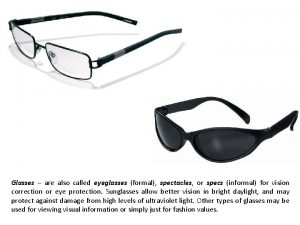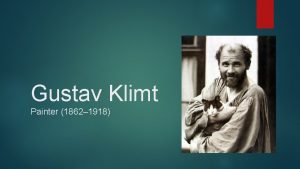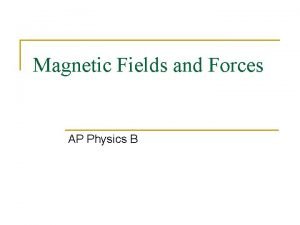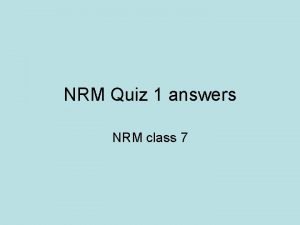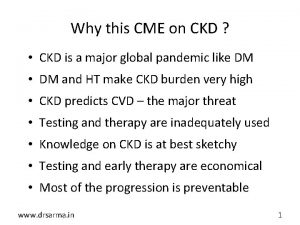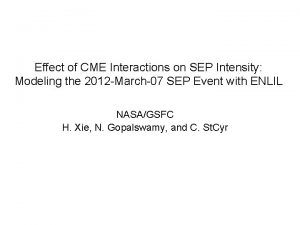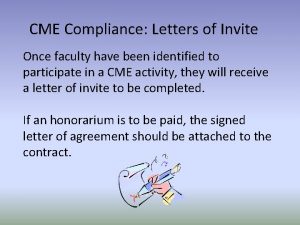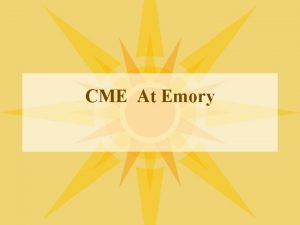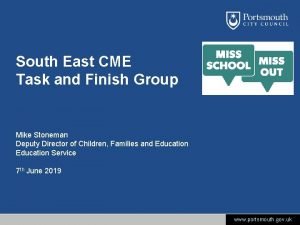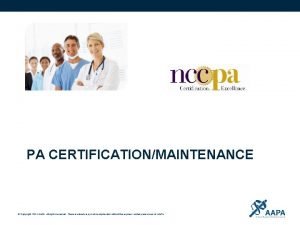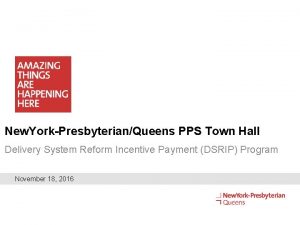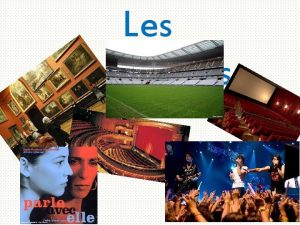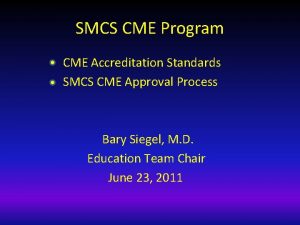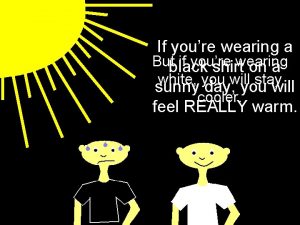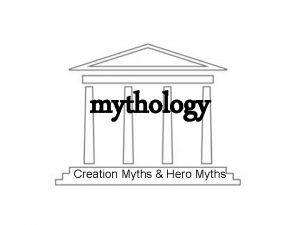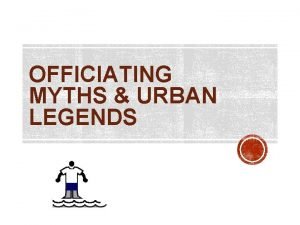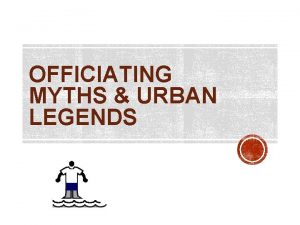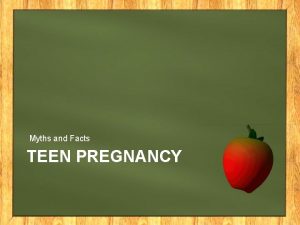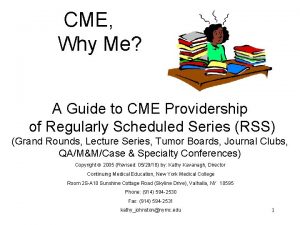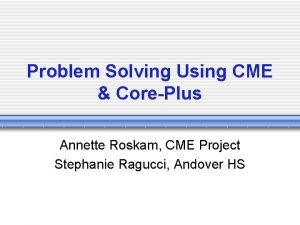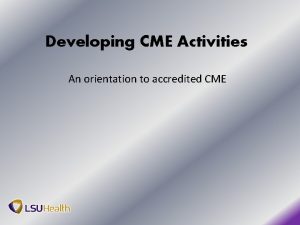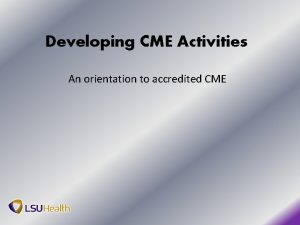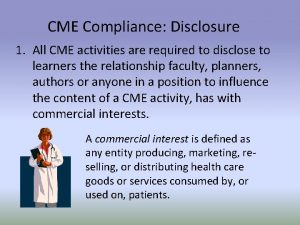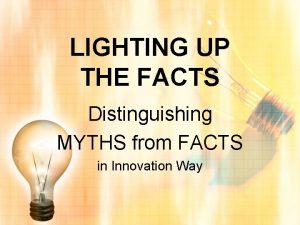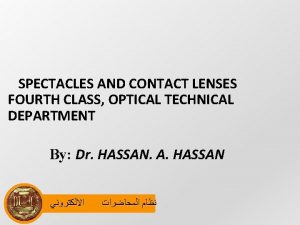SPECTACLES WEARING IN KIDS MYTHS AND FACTS CME
























- Slides: 24

SPECTACLES WEARING IN KIDS: MYTHS AND FACTS CME PRESENTATION PREPARED BY DR. Rosie B (Visiting Pediatric ophthalmologist), Opt. Zubeda M DR. Samson E, MD 10 th March 2021

outline ØIntroduction ØCommon childhood refractive errors ØCommon childhood ocular conditions, a child needs to wear glasses ØHow to measure and quantify Refractive errors in childhood ØWhat happens if children don’t wear spectacles

Introduction • Refractive error; mean that the shape of the eye does not bend light correctly and hence leading to blurred vision or ocular straining • Pediatric refractive errors are those refractive errors that might happen in the children, toddlers or infants

Cont…. • The human eye undergo the dramatic anatomical and physiological development through out infancy and childhood • Most of the growth of the eye takes place in the 1 st yr of life, so the dealing with the pediatric age group should have great expertise in determining the refractive state

Cont… • The clinician that encounter pediatric age group must be fully aware on impact of treatment on pediatric refractive errors • Inappropriate refractive correction will impair child’s optical and neural development as a results a child will suffer life long optical probems

Common childhood refractive errors 1. Myopia (short sightedness) 2. Hyperopia (long sightedness') 3. Astigmatism

Common childhood ocular conditions, a child needs to wear glasses 1. Squint (strabismus) 2. Amblyopia (lazy eye) 3. Myopia

Glasses in children under 6 in Sub Saharan Africa • Squint/strabismus 0. 2% • Amblyopia (poor vision development) 0. 4%



Management of convergent squint • Check refraction and if hypermetropic, . give full correction • DO NOT consider operating until outcome of wearing full hypermetropic correction is known • If straight in glasses then treatment is glasses, no surgery • If squint is less with glasses – treatment is surgery to leave straight in glasses. • If glasses make no difference - surgery • If vision is reduced in non fixing eye – patch eye with good vision to improve vision (this will not alter size of squint)

Myopia – short sightedness • Good vision for reading • Poor vision for distance objects - blackboard in school, TV

5 -15% of African school leavers are myopic

83% of school leavers in Singapore are myopic BUT less Singapore children growing up in Australia have myopia

So, myopia is not all genetic, sometimes are acquired Lifestyle also contributes to myopia eg. Indoor (working, watching TV ) prevention of acquired working and playing outdoor


How to measure and quantify Refractive errors in childhood ØFirst of all through the Visual acuity can give us a clue on whether a child is having a refractive error or not, but more accurate parameter is through refraction. ØThere are two types of refraction a) Objective refraction b) Subjective refraction

Cont…. Objective refraction This is done with a help of retinoscopy and it can be either dilated or undilated. Subjective refraction This is a must for each and every child >6 years

What happens if children don’t wear spectacles while were supposed to. . ØNormally this is going to result into a condition known as Amblyopia (lazy eye) where the visual pathway fails to develop or operate normally due to abnormalities caused by uncorrected refractive errors.

ØThis occurs in an eye which has a higher degree of refractive error than the other without any ocular disease and is more in hyperopia than myopia

ØAmbylopia is treated/ managed for children <6 years because if the eye continues to be amblyopic after that age the brain will shut down the eye and any treatment again such as surgery will not work.

ØWe can do: =>Best refractive error correction =>Patching =>Early Surgery (if possible) =>Vision therapy

WEAR SPECS AS PRESCRIBED BY OPTOMETRIST/ A DOCTOR BE A SOURCE OF GOOD VISION TO OTHERS THE WORLD IS SO BEAUTIFUL

 Hurricane myths and legends
Hurricane myths and legends Eyes are to spectacles as ears are to
Eyes are to spectacles as ears are to Grandpa's spectacles poem
Grandpa's spectacles poem Spectacles
Spectacles Formal spectacles
Formal spectacles Kids r kids west cobb
Kids r kids west cobb Gustav klimt facts for kids
Gustav klimt facts for kids Christmas facts for kids
Christmas facts for kids F equals qvb
F equals qvb Myths and legends quiz questions and answers
Myths and legends quiz questions and answers Albuminuria
Albuminuria Pedialink cme
Pedialink cme Cme 2012
Cme 2012 Cme invitation format
Cme invitation format Emory cme
Emory cme Lente intensificadora de imagem para cme
Lente intensificadora de imagem para cme Intro to day trading
Intro to day trading Cme task
Cme task Cme fec
Cme fec Aapa self assessment cme
Aapa self assessment cme Www nyp org nursing news cme
Www nyp org nursing news cme Cme weather
Cme weather Cme semi centralizada
Cme semi centralizada Cme tracking tool
Cme tracking tool Dr. jeffrey sklar
Dr. jeffrey sklar




